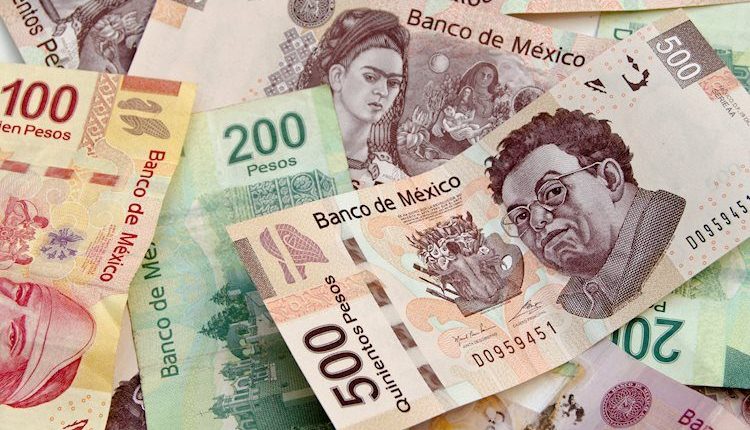- Mexican Peso slumps against the US Dollar, losing more than 0.80%
- Mexico’s CPI for October’s first half eases as Banxico has held rates unchanged since March 2023.
- US business activity improves, exiting contractionary territory as per S&P Global PMIs.
Mexican Peso (MXN) slumped against the US Dollar (USD) after data from the United States (US) boosted the Greenback (USD). Additionally, US Treasury bond yields jumped, even though there is growing consensus amongst investors that the US Federal Reserve (Fed) will keep rates unchanged once again when it meets on November 1. Therefore, the emerging market currency is on the defensive as the USD/MXN is trading at 18.30, up 0.88% on the day.
Mexico reported inflation data before Wall Street opened, with the Consumer Price Index (CPI) rate for the first half of October continuing to ease. That is welcomed news, as the Bank of Mexico (Banxico) has held rates at 11.25% since March 2023, though market players expect the first rate cut in 2024. Aside from this, data from the United States showed that business activity, as revealed by S&P Global PMIs, bounced from the contractionary territory, with most indicators expanding above the contraction/expansion 50 threshold.
Consequently, US Treasury bond yields advanced to 4.88% as a reaction to the data, underpinning the Greenback as shown by the US Dollar Index (DXY), gaining 0.64%, up at 106.27.
Daily Digest Market Movers: Mexican Peso surrenders Monday’s gains, USD/MXN back above 18.30
- Mexico’s National Statistics Agency INEGI reported annual headline inflation hit 4.27%, down from 4.45% at the end of September, below forecasts of 4.38%.
- Mexico’s core inflation rate YoY was 5.54%, beneath forecasts of 5.6%.
- US S&P Global Manufacturing PMI for October jumped to 50, exceeding forecasts of 49.5, while the Services PMI exceeded the contractionary consensus of 49.9, reaching 50.9.
- US S&P Global Composite PMI was 51, above the prior 50.2.
- The Overall Index of Economic Activity in Mexico grew by 0.4% in August, exceeding the estimated 0.3%, data showed on Monday.
- Annually based, the Mexican economic activity expanded by 3.7%, smashing forecasts of 3.4%.
- The Bank of Mexico (Banxico) held rates at 11.25% in September and revised its inflation projections from 3.50% to 3.87% for 2024, above the central bank’s 3.00% target (plus or minus 1%).
Technical Analysis: Mexican Peso loses steam as USD/MXN buyers re-enter the market
The USD/MXN is upward biased, and price action of the last couple of days could form a ‘bullish-harami’ candlestick chart pattern on the daily chart, a bullish pattern. The USD/MXN pair’s first resistance would be the October 23 high at 18.37 before buyers lift the spot price to last week’s high at 18.46, before challenging 18.48, October’s high. Once those levels are cleared, the 18.50 figure would be up for grabs. On the flip side, the USD/MXN must drop below the 18.00 psychological figure for sellers to reclaim the 200-day Simple Moving Average (SMA) at 17.73.
Inflation FAQs
Inflation measures the rise in the price of a representative basket of goods and services. Headline inflation is usually expressed as a percentage change on a month-on-month (MoM) and year-on-year (YoY) basis. Core inflation excludes more volatile elements such as food and fuel which can fluctuate because of geopolitical and seasonal factors. Core inflation is the figure economists focus on and is the level targeted by central banks, which are mandated to keep inflation at a manageable level, usually around 2%.
The Consumer Price Index (CPI) measures the change in prices of a basket of goods and services over a period of time. It is usually expressed as a percentage change on a month-on-month (MoM) and year-on-year (YoY) basis. Core CPI is the figure targeted by central banks as it excludes volatile food and fuel inputs. When Core CPI rises above 2% it usually results in higher interest rates and vice versa when it falls below 2%. Since higher interest rates are positive for a currency, higher inflation usually results in a stronger currency. The opposite is true when inflation falls.
Although it may seem counter-intuitive, high inflation in a country pushes up the value of its currency and vice versa for lower inflation. This is because the central bank will normally raise interest rates to combat the higher inflation, which attract more global capital inflows from investors looking for a lucrative place to park their money.
Formerly, Gold was the asset investors turned to in times of high inflation because it preserved its value, and whilst investors will often still buy Gold for its safe-haven properties in times of extreme market turmoil, this is not the case most of the time. This is because when inflation is high, central banks will put up interest rates to combat it.
Higher interest rates are negative for Gold because they increase the opportunity-cost of holding Gold vis-a-vis an interest-bearing asset or placing the money in a cash deposit account. On the flipside, lower inflation tends to be positive for Gold as it brings interest rates down, making the bright metal a more viable investment alternative.
Read the full article here

